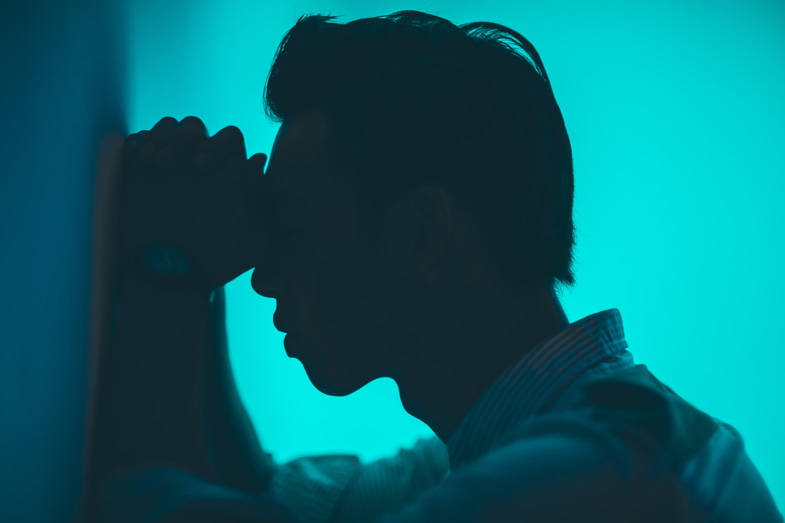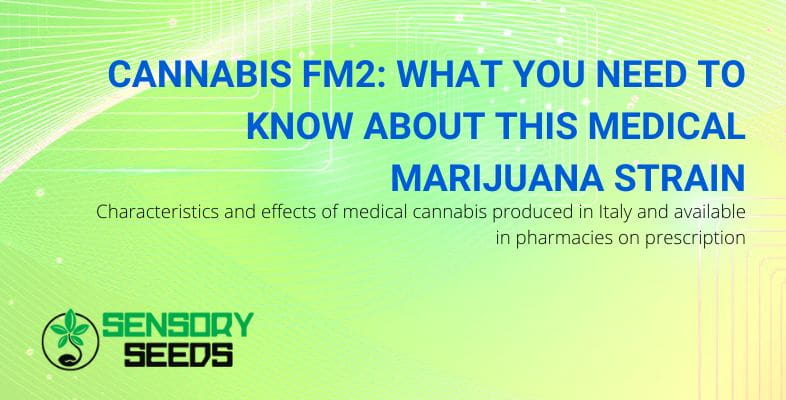Published on: 07/11/2022
Characteristics and effects of medical cannabis produced in Italy and available in pharmacies on prescription
Cannabis FM2 is a medical cannabis variety produced in Italy. It can be purchased in pharmacies with a regular prescription and contains a well-balanced amount of THC and CBD: the former does not exceed 8%, while the latter is around 8 to 12%.
The product is available in powder form, made from dried and ground flowers; the plants for this production are grown in greenhouses kept sterile, without chemical pesticides. The drying and grinding of the flowers are controlled with the utmost precision to ensure the even distribution of the active ingredient. Packaged in small jars, it is then forwarded to hospitals and pharmacies that request it.
Read also: Purple marijuana: the effects and main characteristics of the famous Purple Haze
Where FM2 cannabis is produced
This variety of cannabis is produced in Italy and, thanks to a ministerial collaboration, is processed in the Stabilimento Chimico Farmaceutico Militare in Florence. The abbreviation for this plant, FM2, stands for Farmaceutico Militare, while the number 2 indicates the number of active ingredients it contains.
The production and marketing of FM2 cannabis is part of a larger government project involving the entire country.
When FM2, cannabis can be used
In Italy, medical cannabis may be used to treat the symptoms of certain specific diseases. It does not have to be the only ongoing therapy but should act as a support to a standardized treatment. Generally, medical cannabis is used when conventional drugs have failed or caused problems.
Usually, the application of cannabis-based therapy concerns situations of chronic pain in general, also associated with spasms, such as in multiple sclerosis and spinal cord injury, and the treatment of side effects of chemotherapy and radiotherapy. It can also have a stimulating action in cases of anorexia, even pathological anorexia, and is effective in treating glaucoma and reducing the symptoms of Tourette’s syndrome.
In particular, one of the most frequent and most studied cases involving the use of cannabis concerns the treatment of chronic pain, a context in which, according to studies and research, cannabis appears to have some efficacy. Indeed, research has shown that patients suffering from chronic neuropathic pain treated with cannabis products resort much less to traditional painkillers.


Medical cannabis: contraindications and undesirable effects
The main contraindications to the use of medical cannabis concern individuals suffering from mental problems, abnormalities and impairments, cardio-respiratory problems, liver or kidney failure, psychiatric problems, and drug addiction. Medical cannabis is also contraindicated for women during pregnancy and breastfeeding.
In some more sensitive individuals, cannabis-based medicines may cause unpleasant side effects, such as tachycardia, mood swings, insomnia and psychological issues of various kinds. Still, in most cases, these are transient complaints that resolve spontaneously within a few hours.
Read also: All about the effects of CBDA and the differences between CBD
Recent research into the anti-cancer properties of cannabis
In the context of oncology, cannabis, as we have seen, is often used as a treatment against unwanted symptoms, such as nausea, vomiting, and neurological complaints.
Recently, specific studies have also highlighted some curative aspects of cannabis, especially in the case of breast and prostate cancer.
However, this research is still ongoing: the mechanisms by which cannabis achieves these effects and the efficacy of cannabis have not yet been fully elucidated and will require much further investigation.
How to access cannabis as a therapeutic product?


As we have said, medical cannabis can be administered with a doctor’s prescription, the patient bears the costs of supply, and the pathologies are all considered treatable with this product. It is typically decided to turn to this drug when traditional products have had no effect, in most cases as pain therapy.
Can medical cannabis be self-produced? The law is somewhat restrictive for personal cannabis cultivation and, first, requires that the plants have a THC content of no more than 0.6%: a higher percentage is considered a real offence, even if there is a doctor’s prescription.
Possession of cannabis, even if grown at home, is also an offence and is prosecuted by law. Only in the case of cultivating a few plants in a home-grown and rudimentary manner does this activity not lead to criminal prosecution, but one should still be cautious.
This means that as far as the administration of cannabis for medicinal purposes is concerned, the best solution is to seek advice from your doctor, who will suggest the ideal product depending on the individual pathology.
However, recently many patients have applied for this type of medicine, with many problems in obtaining the drug, which is only produced in the military plant in Florence and distributed in about sixty pharmacies.
Growing cannabis seedlings in a grow box.
Apart from therapeutic use, more and more Italians are also interested in the world of cannabis for collecting purposes.
Thanks to SensorySeeds, the e-commerce portal dedicated to this type of product, it is possible to buy the best light hemp seeds and obtain many excellent certified collectable products that comply with the law.









